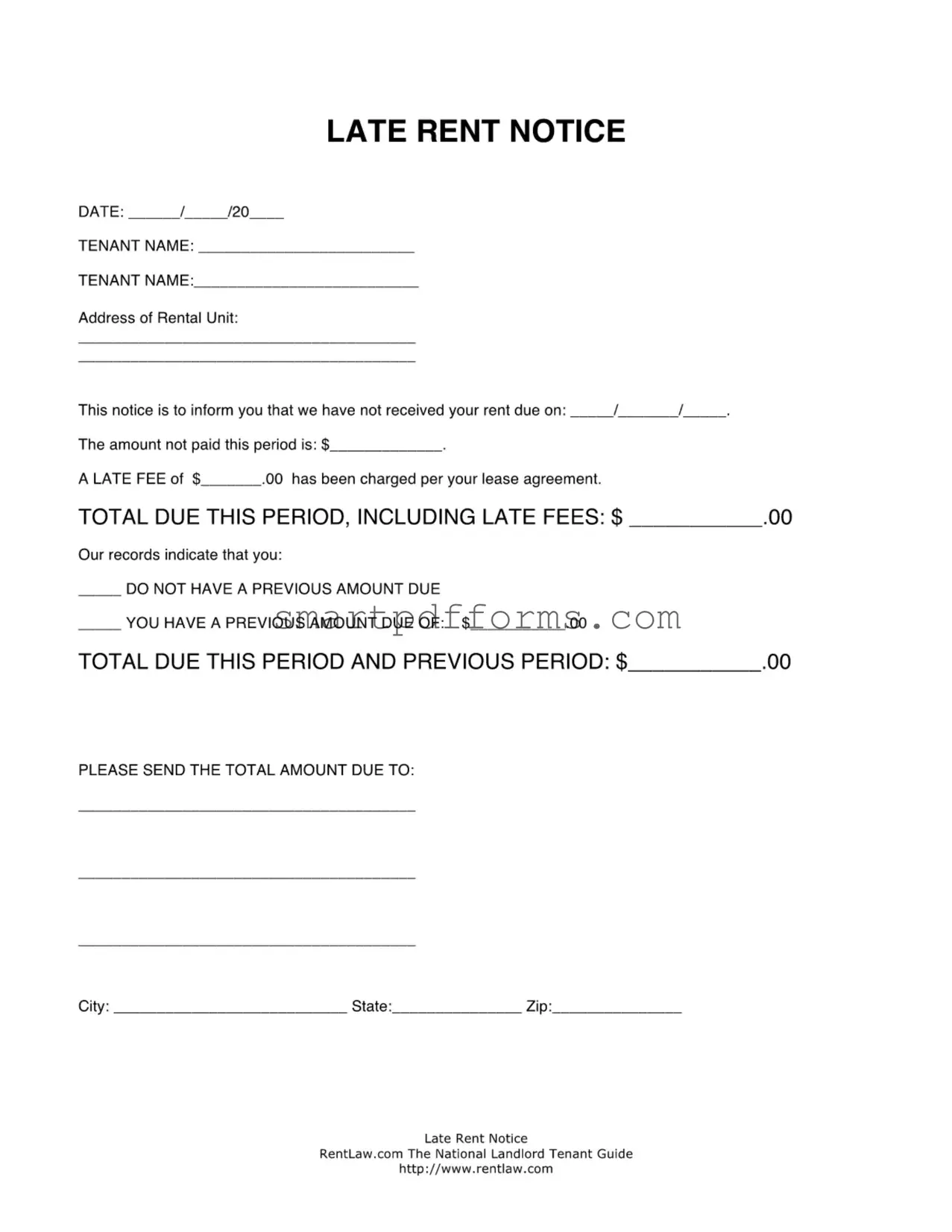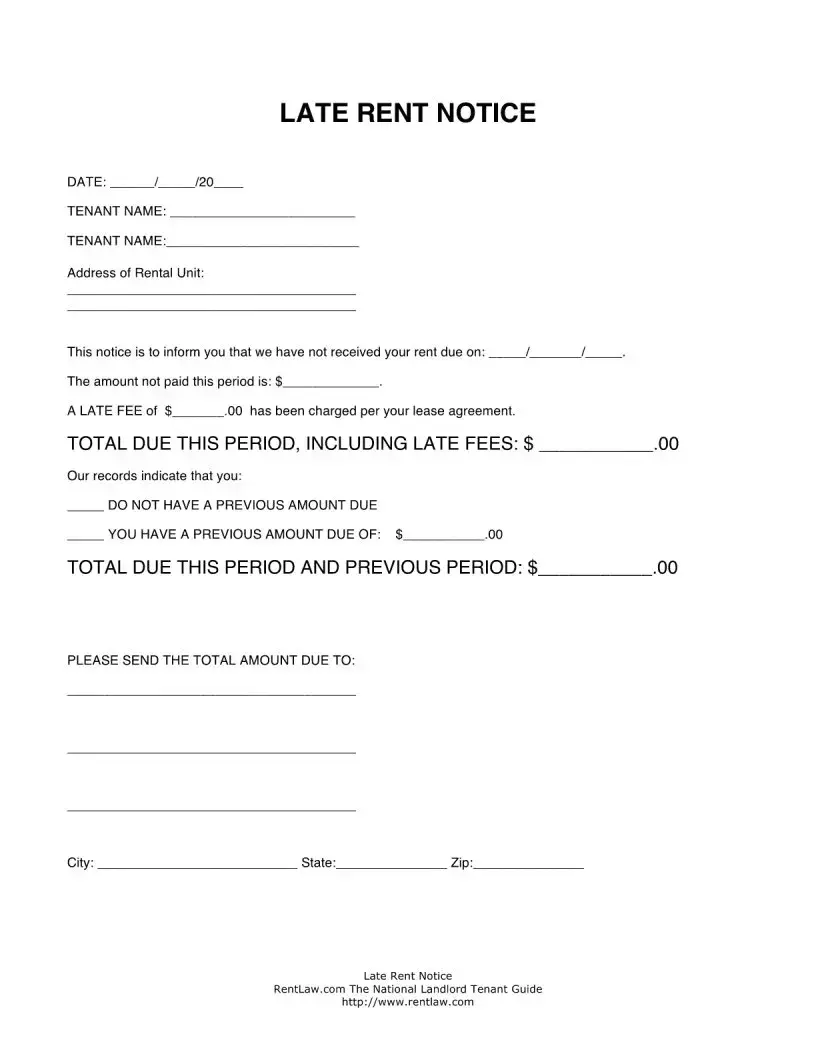Blank Late Rent Letter PDF Template
A Late Rent Letter form serves as a formal notification to tenants from landlords, stating that the rent payment has not been received by the agreed-upon due date. It details the rent amount due, any late fees incurred according to the lease agreement, and the total amount now owed. This notice may also outline if the tenant has any previous outstanding rent, providing a comprehensive account of the total amount due. Click the button below to fill out and submit your Late Rent Letter form efficiently.
Make This Document Now

